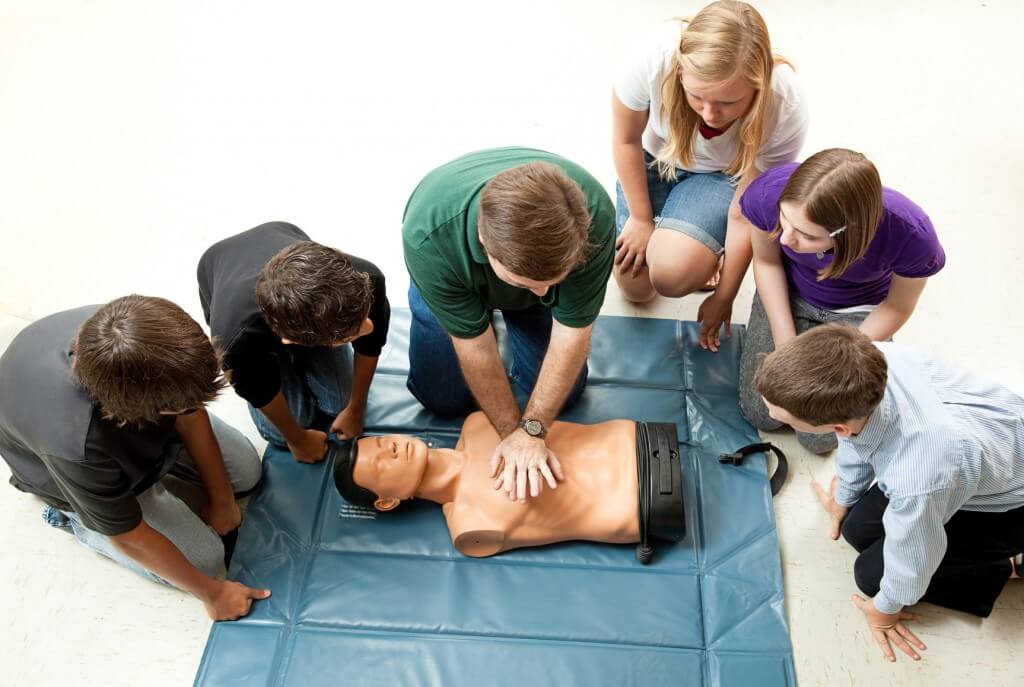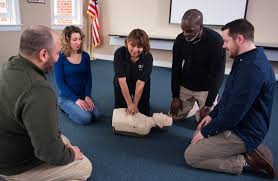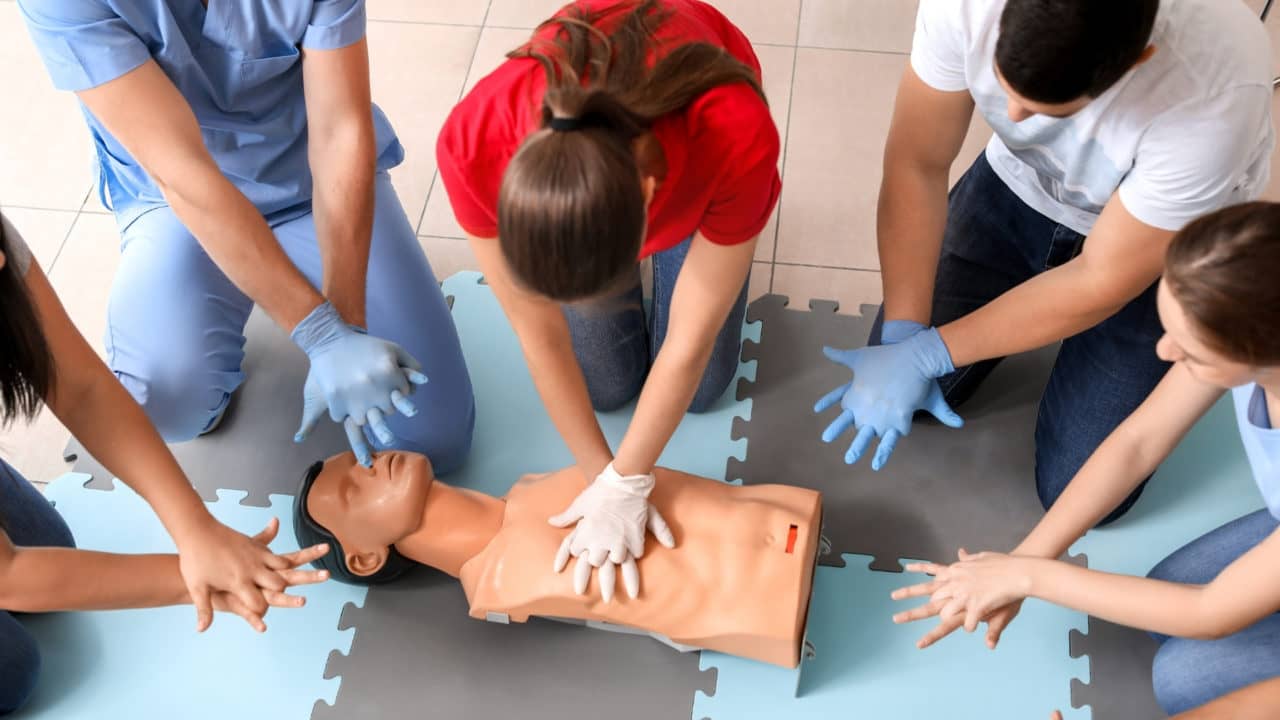Introduction
Cardiopulmonary Resuscitation (CPR) is greater than simply a collection of chest compressions and breaths; it's a life-saving ability that can be the difference in between life and fatality in emergency situation scenarios. The understanding obtained from a first aid course or CPR course can encourage individuals to react properly when faced with a heart attack, choking case, or other vital emergencies. This post checks out the real-life applications of CPR, highlighting its significance and the impact of training on conserving lives.
Real-Life Applications of mouth-to-mouth resuscitation: When Educating Conserves Lives
Understanding CPR
CPR is a crucial emergency treatment made use of to protect brain feature until additional actions are required to bring back spontaneous blood circulation and breathing. It includes two elements:
Chest Compressions: These simulate the heart's pumping activity to maintain blood flow. Rescue Breaths: These supply oxygen to the lungs, crucial for survival.The effectiveness of CPR significantly boosts when executed promptly after cardiac arrest. Studies show that prompt mouth-to-mouth resuscitation can double or triple the opportunities of survival for victims.
Importance of First Aid Courses
First aid programs gear up people with essential abilities past mouth-to-mouth resuscitation, including wound care, acknowledging strokes, and handling fractures. By taking part in these programs, you're not simply learning about emergency situations; you're preparing on your own to act emphatically when it matters most.
Key Elements of First Aid Courses
- Basic Life Assistance (BLS): Covers grown-up, child, and infant CPR techniques. Choking Alleviation Techniques: Includes back strikes and stomach thrusts. Wound Management: How to clean up and clothe injuries properly. Recognizing Emergency situations: Understanding when to call for help versus managing a circumstance independently.
The Function of CPR in Heart Attack Situations
Every year, thousands of thousands experience cardiac arrest outside healthcare facilities. Without prompt treatment, the survival rate goes down substantially every minute that passes without CPR.
Statistics on Cardiac Arrest Survival Rates
|Time Without CPR|Survival Price (%)|| ------------------|-------------------|| 1 Minute|90|| 5 Minutes|50|| 10 Minutes|10|
Source: American Heart Association
Being learnt mouth-to-mouth resuscitation makes sure that bystanders can action in confidently throughout these important moments.
Real-Life Study Demonstrating Effective CPR Application
Case Research 1: The Quick-Thinking Bystander
In a dynamic café one sunny afternoon, a specific broke down as a result of heart attack. A neighboring restaurant that had actually finished a first aid and CPR course jumped into activity. They began carrying out upper body compressions while another patron called 911. Within minutes, paramedics showed up and used an Automated External Defibrillator (AED), inevitably reviving the patient.
Case Study 2: Office Emergency
During a business training event, a staff member suddenly fell subconscious. Fortunately, a number of colleagues were licensed in both first aid programs and innovative life assistance techniques. Their quick response included calling emergency solutions while performing top quality CPR up until aid arrived.
Why Participate in mouth-to-mouth resuscitation Courses?
CPR courses deal hands-on training that constructs self-confidence in your capacities throughout emergency situations. Below are some compelling reasons to register:
Life-Saving Abilities: You find out exactly how to save lives. Boost Self-confidence: Practical works out help cement your skills. Certification Opportunities: Many programs provide certifications upon completion. Community Effect: Trained individuals contribute positively to society by awaiting emergencies.What Are the Different Types of Mouth-to-mouth Resuscitation Courses Available?
When taking into consideration which training program suits your demands best, it is necessary to comprehend the numerous kinds of readily available courses:
Basic Adult/Child/Infant CPR Course
This training course focuses on age-specific techniques tailored for adults, kids, and infants with detailed hands-on practice on mannequins.
Advanced Cardiovascular Life Assistance (ACLS)
Geared toward healthcare professionals, ACLS builds upon basic life support skills with innovative treatments like medicine administration and advanced respiratory tract management.
Pediatric Advanced Life Assistance (CHUMS)
Designed for doctor who handle critically ill babies and children; chums consists of situations particular to pediatric emergencies.
Online vs In-Person Training
Many companies currently use online modules which can supplement traditional class knowing but do not change hands-on practice crucial for grasping skills like upper body compressions.
Benefits of Having an Emergency Treatment Certificate
Obtaining a first aid certification demonstrates your commitment to security and preparedness in various settings-- whether in the house or job-- improving both expert trustworthiness and personal guarantee when emergencies arise.
Career Advantages
Having certification can improve employability in areas such as education, health care sectors, fitness training sectors where safety and security is paramount.
Common Misconceptions Concerning CPR
It's vital to eliminate misconceptions surrounding this crucial capability:
Myth # 1: "Only Medical Professionals Must Carry out CPR"
Fact: Any individual can execute standard life-saving techniques if trained correctly; you don't require clinical expertise!
Myth # 2: "You Can Hurt Somebody by Carrying out mouth-to-mouth resuscitation"
While it holds true there's some danger included-- it's much surpassed by the potential benefits when done correctly!


Myth # 3: "CPR Is Only Required For Adults"
Children also require prompt interventions; thus recognizing pediatric methods is equally vital!
FAQs About Real-Life Applications of CPR
FAQ 1: What ought to I do if I see someone collapse?
If you witness somebody collapse:

- Check responsiveness Call emergency situation services Begin carrying out CPR instantly if they show no indicators of breathing
FAQ 2: Just how typically must I restore my certification?
Most companies suggest restoring your first aid certificate every two years due to evolving standards and practices.
FAQ 3: Can I discover CPR online?
While online training courses give useful details, hands-on method is essential for grasping abilities efficiently-- try to find hybrid choices if possible!
FAQ 4: What are some suggestions for executing effective chest compressions?
Aim for:
- A depth of at the very least 2 inches A price around 100-120 compressions per minute Allow complete recoil in between compressions without lifting hands off the breast
FAQ 5: Do I need special tools for performing rescue breaths?
No special tools is called for! However using obstacle devices like face guards can enhance safety and security while giving rescue breaths if available.
FAQ 6: What function does AED play in conjunction with CPR?
Automated External Defibrillators assess heart rhythm & & encourage whether shocks are needed which significantly raises chances of survival when made use of along with premium upper body compressions!
Conclusion
The real-life applications of mouth-to-mouth resuscitation are indisputable; they extend much beyond academic understanding into real scenarios where lives are conserved with decisive actions taken by experienced people. Enrolling in a comprehensive first aid course or participating in specialized CPR courses outfits you with indispensable skills that could make all the difference Find out more during an emergency situation-- not just benefitting others yet encouraging yourself also! The time spent today prepares you for whatever tomorrow might bring-- and isn't that something worth considering?